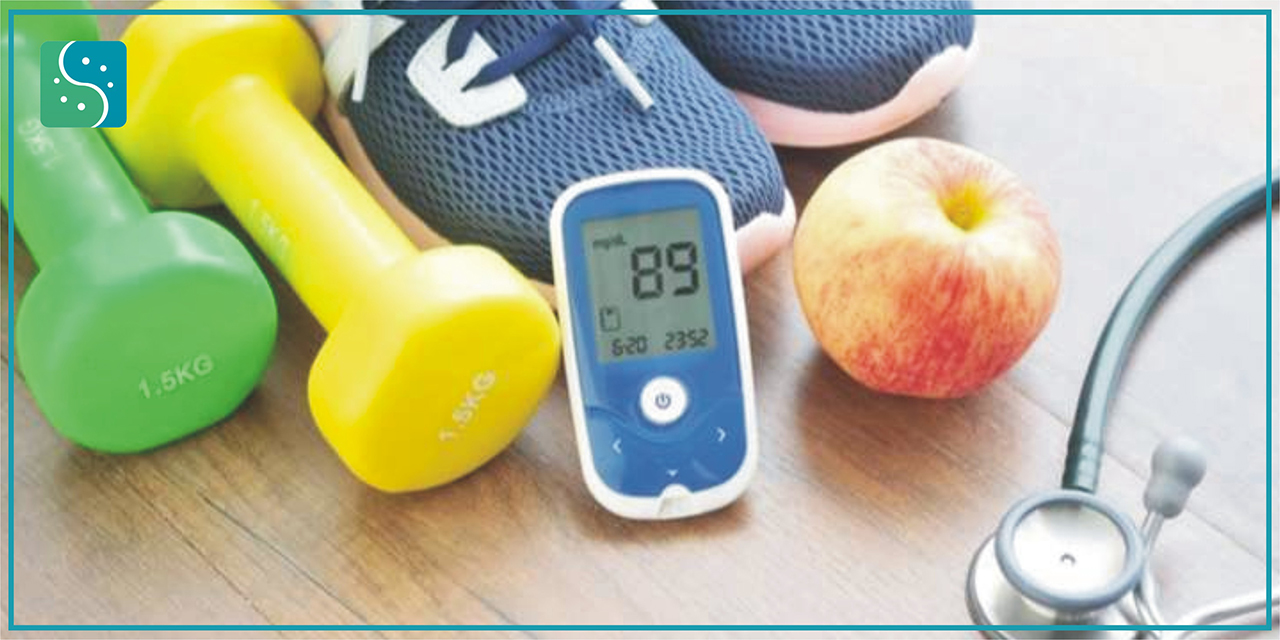DIABETES MELLITUS refers to a group of diseases that affect how the body uses blood sugar (glucose). The main cause of diabetes varies by type. But no matter what type of diabetes you have, it can lead to excess sugar in the blood. Too much sugar in the blood can lead to serious health problems.
Chronic diabetes conditions include type 1 diabetes and type 2 diabetes. Potentially reversible diabetes conditions include prediabetes and gestational diabetes. Prediabetes happens when blood sugar levels are higher than normal; but the blood sugar levels aren't high enough to be called diabetes. Gestational diabetes happens during pregnancy. But it may go away after the baby is born.
Homoeopathy emphasis on the holistic management of diabetes. Its aim is primarily focussed on maintaining ‘normal’ levels of insulin, or keeping conventional anti- diabetic drugs at the minimum possible doses, and in preventing the progression or complications of the disease.
If you are on conventional diabetic treatment from a very long time, it is strongly recommended not to stop your medicines suddenly even if you have started taking homoeopathic medicines. The medicines are gradually tapered off under the guidance of an expert homoeopathic doctor and results may vary from case to case.
Type 2 diabetes is a constitutional disorder as it is an offshoot of constitutional defects (genetic factors, altered immunity) having an impact on the entire constitution of an individual. Hence it calls for an in- depth constitutional approach for its management.
The role of healthy diet and exercise cannot be underestimated along with the above treatment measures.
Diabetes develops when your pancreas doesn’t make enough insulin or any at all, or when your body isn’t responding to the effects of insulin properly. Diabetes affects people of all ages. Most forms of diabetes are chronic (lifelong), and all forms are manageable with medications and/or lifestyle changes.
There are several types of diabetes. The most common forms include:
Diabetes symptoms depend on your blood sugar levels. Some people, especially if they have prediabetes, gestational diabetes or type 2 diabetes, may not have symptoms. In type 1 diabetes, symptoms tend to come on quickly and be more severe. Some of the symptoms of type 1 diabetes and type 2 diabetes are.
Too much glucose circulating in your bloodstream causes diabetes, regardless of the type. However, the reason why your blood glucose levels are high differs depending on the type of diabetes.
Causes of diabetes include:
Acute diabetes complications. Can be life-threatening, includes
Hyperosmolar hyperglycemic state (HHS): This complication mainly affects people with Type 2 diabetes. It happens when your blood sugar levels are very high (over 600 milligrams per decilitre or mg/dL) for a long period, leading to severe dehydration and confusion. It requires immediate medical treatment.
Long term diabetes complications. Develop gradually. Possible complications includes.
Heart and blood vessel (cardiovascular) disease. Diabetes majorly increases the risk of many heart problems. These can include coronary artery disease with chest pain (angina), heart attack, stroke and narrowing of arteries (atherosclerosis )
Diabetes is diagnosed by checking your glucose level in a blood test. Three tests can measure your blood glucose level:
Type of Test |
In-range (mg/dL) |
Prediabetes (mg/dL) |
Diabetes (mg/L)
|
Fasting Blood Glucose Test |
< 100 |
100 to 125 |
126 or Higher |
Random Blood Glucose Test |
N/A |
N/A |
200 or Higher (with classic symptoms of hyperglycemia or hyperglycemic crisis |
HBA1c |
< 5.7% |
5.7 % to 6.4% |
6.5% or higher |
To screen for and diagnose gestational diabetes, doctors order an oral glucose tolerance test.
Diabetes is a complex condition, so its management involves several strategies. In addition, diabetes affects everyone differently, so management plans are highly individualized.
The main aspects of managing diabetes include:

Type 1 diabetes can't be prevented. But the healthy lifestyle choices can help treat prediabetes, Type 2 diabetes and gestational diabetes can also help prevent them by.
Being diagnosed with diabetes is a life-changing event, but it doesn’t mean you can’t live a happy and healthy life. Managing diabetes involves consistent care and diligence. Homoeopathic treatment is primarily focussed on maintaining ‘normal’ levels of insulin, or keeping conventional anti- diabetic drugs at the minimum possible doses, and in preventing the progression or complications of the disease. While it’ll likely be very overwhelming at first, over the time you’ll get a better grasp on managing the condition and being in tune with your body.
It is strongly advised not to stop your conventional diabetic treatment suddenly, even if you have started homoeopathic treatment. These medicines are generally tapered off under the guidance of an expert homoeopathic doctor depending upon the case.
Homoeopathy is based on the principle of individualisation and symptom similarity by using holistic approach. The aim of homoeopathy is not only to treat the disease condition but to address its underlying cause and individual susceptibility. Several remedies are available to treat diabetes and its complications; that can be selected on the basis of individualisation and symptom similarity. For individualized remedy selection and treatment, the patient should consult a qualified homoeopathic doctor in person.